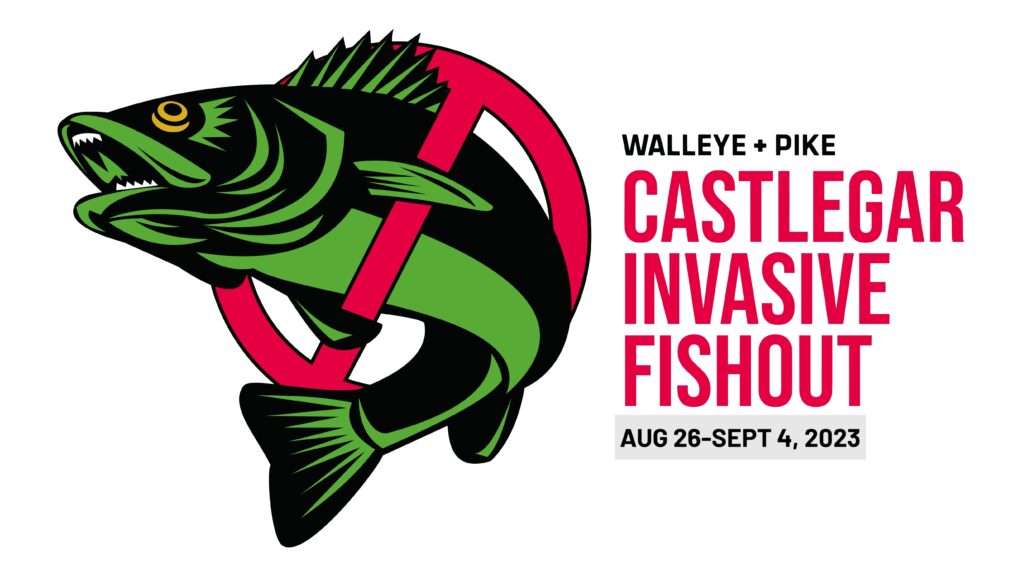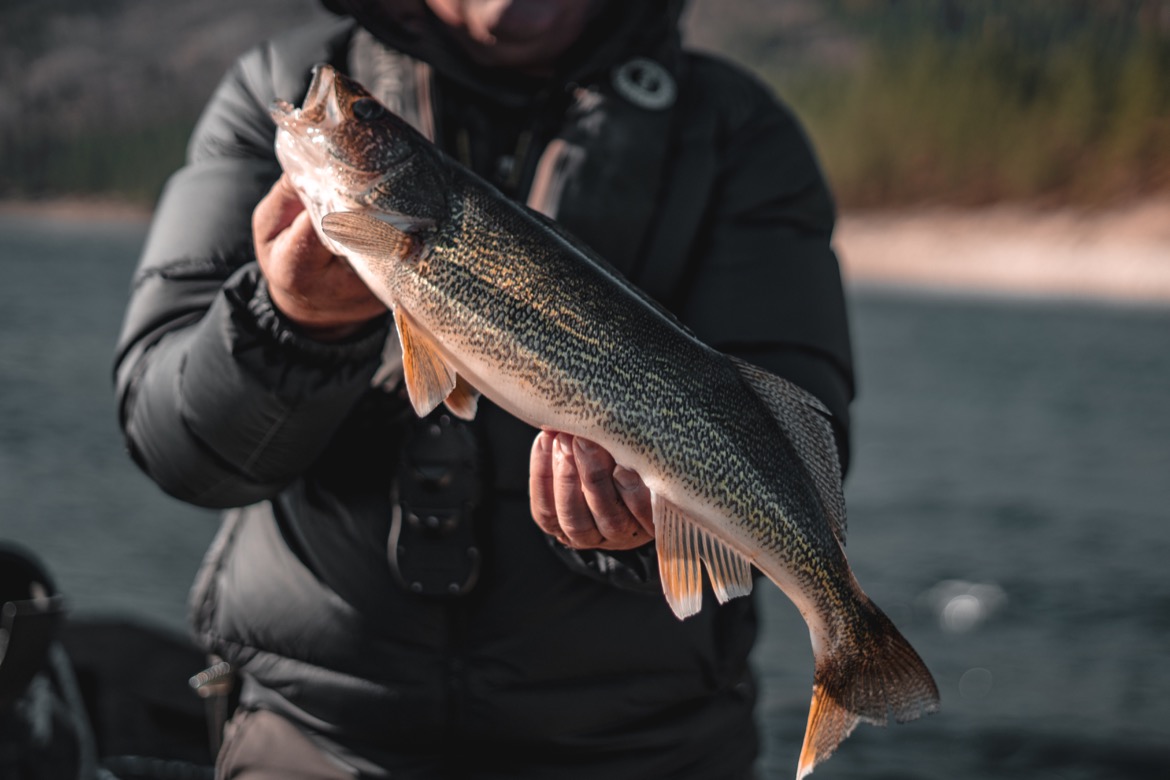This summer Castlegar will host the Invasive Species Fishout Derby on the Columbia River. The intent is to catch as many walleye (Regional Guidelines) and northern pike as possible because both species were introduced to the waters here and are detrimental to the native species of trout, Kokanee, and others. Hosted in conjunction with Fishing BC and the Okanagan Nation Alliance, the derby will be held August 26 to September 4 and there are $4,800 worth in prizes, including $1000 minimum for the longest walleye caught.

The event will be administrated via the “MyCatch mobile app,” which was developed as a citizen science tool to help fisheries researchers better understand the state of our fisheries. To learn more info about the Invasive Species Fishout Derby and for registration instruction, visit its website here.
Tournament boundaries are within the limits of the Columbia River system in British Columbia within the following confines: the upstream boundaries are the Hugh Keenleyside Dam on the Columbia stem and the Highway 3A bridge on the Kootenay River stem. The downstream boundary is the downstream side of the Waneta Dam on the Pend Oreille River stem and the Canada/US border on the Columbia stem.

Fishing derbies have a long and storied history around the world that trace back well over 170 years. Here are a few random facts about angling tournaments and the history of sport fishing in general:
-
- Although prehistoric peoples used lines and bone hooks to catch fish in deeper waters, the use of fishing rods as we know them today can be traced back about 4,000 years ago to ancient Egypt and China. They were made from six-foot long bamboo, hazel shoots, or sections of a thin tapered flexible wood with a horsehair line and a simple hook tied to its end.
- One of the first recorded fishing derbies that was officiated took place on April 13, 1846 and it was match between the Hulme Anglers Society and the Warrington Anglers Society on the River Weaver in England. Six scrutineers and an umpire were appointed to watch over the proceedings. The stake in the match was for £5 a side.
- The International Game Fish Association was established in 1939 and is the world’s official association for record keeping.
- The first angling club in the Americas was the Schuylkill Fishing Company founded in Philadelphia, Pennsylvania in 1732. To date, the Schuylkill Fishing Company remains the oldest continuously operating social club in the English-speaking world.
- The very first televised fishing competition was the Bassmaster Classic in 1967.
After you’re time on the river, please remember to clean, drain and dry your boat. “The Central Kootenay region has numerous pristine lakes and rivers to enjoy. They have created endless recreation possibilities for people of all ages. It is important to protect our water from the harmful impacts of aquatic invasive species,” says Khaylish Fraser of the Central Kootenay Invasive Species Society. “The most common way that invasive species are spread and introduced from one waterbody to another is through human transportation. Aquatic invasive species can act as hitchhikers and can latch themselves onto boats and gear.”
What can YOU do to Help?
CLEAN your watercraft and equipment. After an enjoyable day on the water spend the time inspecting your watercraft and all of your gear for any signs of plant or animal materials. Invasive hitchhikers can be anywhere so look in all the nooks and crannies. It is not just motorized boats that can transport invasive species: canoes, kayaks, paddle boards, floaters, oars , life jackets, fishing gear just to name a few, need to be cleaned as well.
Rule of thumb: if it touches water it needs to be cleaned.
DRAIN onto dry land any item that can hold water (e.g. bilge, ballast, wells, buckets).
Leave the drain plug out to ensure the bilge can dry.
DRY all items completely before launching the watercraft into another body of water. Invasive Species protection


